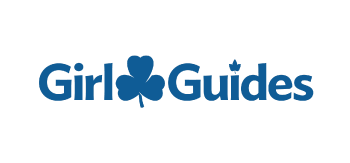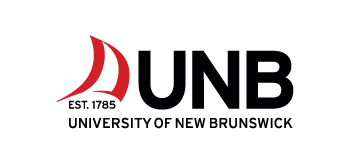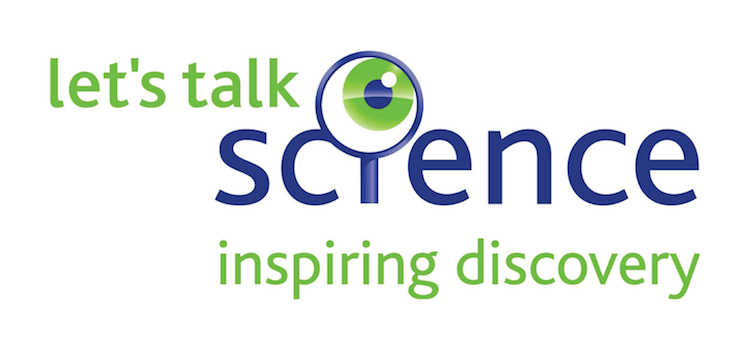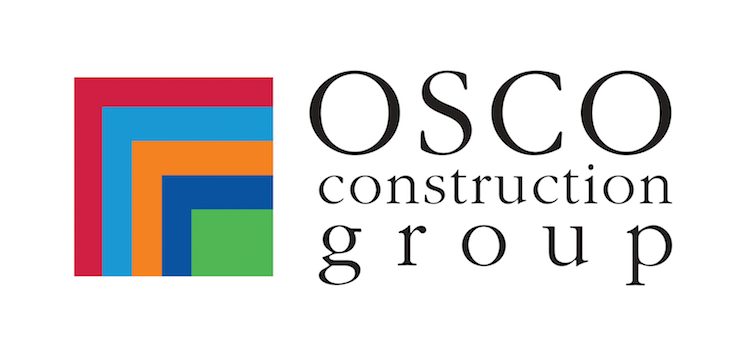- President's office
- Vice President Academic (Fredericton)
- Student Recruitment Office (Fredericton)
- Faculty of Science
- Faculty of Computer Science
- Dept of Math & Stats (Fredericton)
- Dept of Biology (Fredericton)
- Dept of Chemistry (Fredericton)
- Dept of Earth Sciences (Fredericton)
- Dept of Physics (Fredericton)
Amateur Radio
Nicole Bendrich, Brent R. Petersen, Katelin F. Spence, Xavier F. St-Onge
Electrical & Computer Engineering UNBF
A brief presentation will be made about the hobby amateur radio. Using VE9UNB, the call sign of the University of New Brunswick, a few of the Guides will be able to use three of the small radios to speak with people in different places in the world. Having an amateur radio licence instantly gives one a million friends all over the world.
Box Head Maze
Katie Skead
Worlds UNBound
Through a simple circuit, one camper can control another’s movements though LED signals in a box that covers their head. Using this interactive activity, participants will explore ideation to innovation, systems thinking and user-centered design. They will also improve their problem solving, communication and teamwork skills. Participants will discover how detailed computer instructions need to be.
Building Challenge
Shelley Petit
Let’s Talk Science
Your mission (should you chose to accept it): work as a team with items provided to complete a mystery design challenge.
Building a Geometric Sculpture
C. Hope Alderson
MathStats UNBSJ
In this activity, participants are led to assemble flat foam components into a large-scale, visually engaging geometric sculpture. Along the way, they are discovering and extending patterns while developing spatial reasoning and problem solving skills. The final result is an impressive centerpiece that highlights the creative side of math and can be publicly displayed to showcase mathematics as an art form.
Calendar mathematics and the date of Easter
Alyssa Sankey
MathStats UNBF
Easter in western countries fell on March 31 in 2013, April 20 in 2014, then April 5, March 27, April 16, and this year on April 1. Is there any pattern to these dates? What are the earliest and latest possible dates for Easter? How often does Easter coincide with April Fools’ Day? We will look at the mathematics behind determining the date of Easter.
Chemical Mysteries
Val Reeves
Chemistry UNBF
Using our senses to solve puzzles and mysteries is really all about chemistry. In this workshop, students will use chemistry to solve a crime, decipher unknowns, and smell their way to a solution.
Chemotherapy: Its Beginnings and Modern Research
Andreas Decken
Chemistry UNBF
We will be exploring how Chemotherapy became to be, the challenges encountered that are unrelated to scientific research and how everyday chemicals are related to potent chemo drugs.
Counting Problems
Elham Ghamari, Caroline Purdy, Naghmeh Shahverdi
Math Learning Centre UNBF
Girls will learn about counting techniques, triangular numbers and the fundamental counting principle and use the techniques in some classic mathematical problems. These include the handshake problem, paths on a grid and bowling pin problems.
Curves with Lines
Sabrina Cui, Mahtab Davoudi, Caroline Purdy
Math Learning Centre UNBF
There are many interesting curves that can be drawn using only straight lines. We will experiment with placemat spirals, draw some curves with a ruler and pens and end with the four ant problem.
Cyberlaunch Academy: Animation
Megan Doherty, Natalia Staknanova
Cyberlaunch Academy
How many times in your dreams did you make up stories about your favorite cartoon characters? Guess what? With our animation session, you can start building the skill that will help you to bring these stories and characters to life! During this session we will introduce you to the basics of 2D computer animation with Moho animation software and will discuss Disney’s basic principles of animation which are used in all modern animations.
Cyberlaunch Academy: Binary count
Megan Doherty, Mahlet Legesse, Hannah Meneley, Natalia Staknanova
Cyberlaunch Academy
For a person unfamiliar with computer science there is a lot of mystery about how computers work. Have you ever asked yourself a question about how do computers process and store information? If you did than you need to learn the binary number system. Once you muster your understanding of binary count you will see that computers are just machines which primary purpose is switching on and off binary digits. Come and learn what those bits and bytes are about and lift the mystery from computers.
Cyberlaunch Academy: Coding with Drones
Alex Demmings, Megan Doherty, Julia Meneley, Natalia Staknanova
Cyberlaunch Academy
This training session provides a perfect introduction to real programming. No more visual drag-and-drop programming! Here you will get gentle introduction to coding in Arduino programming environment and will learn few cool concepts such loops, variables, and conditional statements. You will also try to use this knowledge to program simple controls such as taking off and landing
Cyberlaunch Academy: Coding with Scratch
Alex Demmings, Megan Doherty, Julia Meneley, Natalia Staknanova
Cyberlaunch Academy
Many believe that the foundation of the future world of technology begins with Scratch. Scratch is a visual programming language that was developed to introduce younger children to programming. Currently many established programmers trace their careers back to times when they began exploring the world of modern computing with Scratch coding and learned the fundamental programming concepts. In this training session we will use Scratch to introduce students to these concepts. Students will learn about loops, variables, conditional statements and other “every programmer must know” things.
Cyberlaunch Academy: Robotics
Sree Ananthasayanam, Megan Doherty, Jacob Majcan, Natalia Staknanova
Cyberlaunch Academy
This workshop provides students with fun introduction to robotics with a miniature robot Finch. Students will use Scratch programming language to teach their robot to move, to draw, and to avoid various obstacles.
Drawing Pictures with Inequalities
Mohammad El Smaily
MathStats UNBF
We will draw regions in the plane that come from algebraic inequalities. Aside from learning how graphing helps to understand inequalities, we will draw beautiful pictures that actually reflect a system of algebraic expressions that are hard to grasp without visualization.
Einstein’s ripples: listening to the universe with waves of gravity
Sanjeev Seahra
AARMS and MathStats UNBF
When giant black holes smash into each other they cause the fabric of space and time to shake like Jello. I will tell you why this happens, and how we listen to these collisions right here on Earth.
Engineering – Fun facts about this exciting career choice!
Tracey Germon, Jean-Frédéric Lalonde, Melissa Steeves
Engineers and Geoscientists NB
Engineering is an exciting career choice for anyone with keen interest in sciences, technology and math. Our presentation will give you a glimpse as what engineering is all about, what it’s like to be an engineer, the cool and fascinating projects we are involved with, and why this career is for you.
Fish habitat and stream crossing
Katy Haralampides
Civil Engineering UNBF
How do you design a house for a fish? Come and explore ecohydraulics, which combines engineering and science to help the environment. We will build habitat for wild Atlantic salmon in the lab, taking into consideration all of the needs of the fish, and the hydraulics of the river. We will also use our engineering design skills to help characters cross the stream safely.
Folding up 3D shapes
Barry Monson
MathStats UNBF
We will first weave a cube from strips of paper, then weave a tetrahedron (another pretty shape like a pyramid over a triangular base). Our shapes fit together in a way that is guided by a simple code. More complicated codes like this are a crucial part of modern communications – from cell phones to ATMs.
Gauss’s Theorema Egregium
Branimir Cacic
MathStats UNBF
What’s the best way to eat a slice of pizza? What gives corrugated cardboard its additional strength? And why, for that matter, is a perfect map of the earth impossible? We will find answers to all these questions through Carl Friedrich Gauss’s pride and joy, his Theorema Egregium (“Remarkable Theorem”).
Geological engineering: landslides
Ann Timmermans, Nikole Watson
Quartermain Earth Science Centre
Want to save the world? From earthquakes, volcanic eruptions, floods, hurricanes and more, Geological Engineers solve problems to help us live in a world full of natural disasters! In this activity we explore landslides: what they are and how to save your town from disaster!!
Geological time
Steven Rossiter, Ann Timmermans
Quartermain Earth Science Centre
Excuse me: do you have the Geological Time? How old are you and how do you know how old you are? Geologists have dated the Earth to be 4.54 Billion years old. Curious about how geologists measure the age of the Earth, the age of the dinosaurs, or any other geological events along the way? In this activity we explore relative and absolute time using blocks and lots of skittles!!
Hexominos
Patrick Reynolds, Mustafa Afzal Saeed, Alex Snow
MathStats UNBF
If you’ve played the game of Tetris, you’re familiar with the possible two-dimensional shapes that four cubes can create. This activity will explore the possible shapes that you can make with 5 or six cubes, and some interesting patterns that emerge. This activity is best done in small groups.
How does MRI work?
Shahla Ahmadi, Razieh Enjilela, Amy-Rae Gauthier, Sarah Vashaee
Physics UNBF
Girls will participate in a hands-on activity using gyroscopes as an analogy to see what happens to water molecules when we put them in an MRI machine. Girls will then tour the UNB MRI Research Centre to see what an MRI machine looks like and how it works.
Innovation Stations 1
Katie Skead
Worlds UNBound
Innovation Stations are designed to give participants a first-hand look at the tools and technologies used by innovators and people who want to use STEM to make the world a better place. The stations are designed to be self-guided by students promoting curiosity, risk-taking, critical thinking and problem solving. Youth are reminded of how innovation as a value is important to improving the social and economic prosperity of our country when we ensure that all voices are represented and everyone feels like they can fulfill their potential.
Innovation Stations 2
Katie Skead
Worlds UNBound
Innovation Stations are designed to give participants a first-hand look at the tools and technologies used by innovators and people who want to use STEM to make the world a better place. The stations are designed to be self-guided by students promoting curiosity, risk-taking, critical thinking and problem solving. Youth are reminded of how innovation as a value is important to improving the social and economic prosperity of our country when we ensure that all voices are represented and everyone feels like they can fulfill their potential.
Maker Space
Katie Skead
Worlds UNBound
Learn how to 3D scan, 3D print, laser cut, solder, and a few basics of 3D modelling.
Math Basketball
Taren Cook, Brennen Finlay, Heather Grant McLoughlin, John McLoughlin, Mark Niles
MathStats and Education UNBF
This event will integrate basketball and mathematics, as groups will solve problems and shoot baskets. Success in this team-based activity will require answering mathematical challenges while engaging in some physical activity.
Mining and Resources
Kelsey Koerner, Maree McGregor, Ann Timmermans
Quartermain Earth Science Centre
Where does stuff come? Let’s explore the mining cycle! From exploration, environmental assessments to operations with some chocolate-chip cookie mining! Yum!!
Nasty Number Tricks and Devious Divisibility
Dorette Pronk, Mayada Shahada
NS Math Circles and MathStats Dalhousie
In this presentation the participants will encounter one of the powertools of mathematics: algebra. They will learn how to use techniques from algebra to solve complicated divisibility problems as well as fun number tricks to play on their friends.
Nim
Patrick Reynolds
MathStats UNBF
Starting with one or more piles of toothpicks, two players take turns removing them according to some simple rules, and the player to remove the last toothpick is the winner. There are several variations of this game to be explored, and some interesting mathematics are involved in finding a winning strategy.
Number Games
Shahla Ahmadi, Kayla Beck, Caroline Purdy
Math Learning Centre UNBF
Girls will learn how to count in different bases and be challenged on the structure of our number system. We will play some number games and magic tricks using numbers.
Ozobots 1
Katie Skead
Worlds UNBound
In this activity, campers will be exploring the concepts of light and colour through robotics and programming. They will be designing their own tracks for the Ozobot to follow while also observing and hypothesising how the robot understands what to do.
Ozobots 2
Katie Skead
Worlds UNBound
In this activity, campers will be exploring the concepts of light and colour through robotics and programming. They will be designing their own tracks for the Ozobot to follow while also observing and hypothesising how the robot understands what to do.
Parallel Lines and Cubes
Sushant Giri, Caroline Purdy, Soumya Satheesan
Math Learning Centre UNBF
Girls will learn interesting facts about parallel lines and cubes. This hands-on session includes drawing, making 3D models and playing with dice and rubric’s cubes.
Probability in Genetics
Sarah Purcell
Let’s Talk Science
Participants will learn all about the Math of Genetics. How do scientists find out what genes will be passed on to a child? Are some genes more complicated than others? We will have UNB Biology students helping with the session and hands on activities so you can practice your Genetic Math!
Signals and Encryption
Dustin Gamblin, Jordan Grattan, Dan Trojand
Physics UNBF
Girls will be guided to think about the nature of communication and signals. We will discuss a variety of signals and focus on a binary representation with LEDs and the use of Morse code. We will then discuss the need for encryption and have them make basic encryption schemes and try to break each other’s codes.
Signatures in Light
Viqar Husain
MathStats UNBF
How do we know which elements are in the Universe far away from the Earth? And how do we know how much of each element is there?
Sprouts
Josh Koncovy, Patrick Reynolds, Suprit Singh
MathStats UNBF
Sprouts is a simple two-player game that requires only pencil and paper. After playing the game a few times, some questions pop up: What’s the shortest possible game? What’s the longest possible game? Does the game always end, or is there some sequence of moves that would allow it to continue forever? The answers to these questions involve some simple mathematical arguments, and can be illustrated.
Spruce budworms
Steve Heard, Emily Owens
Biology UNBF and Natural Resources Canada
Spruce budworm, a caterpillar pest that threatens our forests, has an interesting biology: every 35 years or so its populations boom, and then return to low levels until the next outbreak. Why does this happen? Together we’ll explore some simple math behind population cycles and outbreaks, and talk about how they might apply to budworm in our forests. Led by Steve Heard (UNB) and Emily Owens (Canadian Forest Service)
Square Wheels and Reuleaux Triangles
C. Hope Alderson
MathStats UNBSJ
Math can make the seemingly impossible possible! We will explore the puzzling question: “Can wheels be square?” The answer may just surprise you. We will also explore other interesting geometries like reuleaux triangles and their useful applications.
Stream Ecology
Zacchaeus Compson, Jen Lento, Wendy Monk
Canadian Rivers Institute UNBF
What lies below the water’s surface? Girls will learn about approaches to measure stream health using hands-on activities with the animals that live in the river. You’ll get to meet juvenile dragonflies, mayflies and stoneflies as well as worms and snails and you will get to use information about these animals to assess stream health!
UNB campus tour
Travis Daley
UNB Student Recruitment
Touring UNB can offer students and understanding of what UNB has to offer. Students will receive a brief overview of campus facilities, academic supports/services, and ways to engage in extracurriculars while attending university. The tour will show case UNB’s picturesque and historic campus.
Venn diagrams
Mahin Salmani
MathStats UNBF
Venn diagrams use overlapping circles to illustrate the logical relationships between two or more sets of items. Often, they serve to visually organize information. In this session, we use Venn diagrams to answer some complex real world problems.
What shape is your world?
Dorette Pronk, Mayada Shahada
NS Math Circles and MathStats Dalhousie
How would your world be different if we lived on a donut surface instead of a ball/sphere?Would we be able to connect better? In this presentation we will explore different shapes and surfaces and discuss practical problems such as map colouring.









